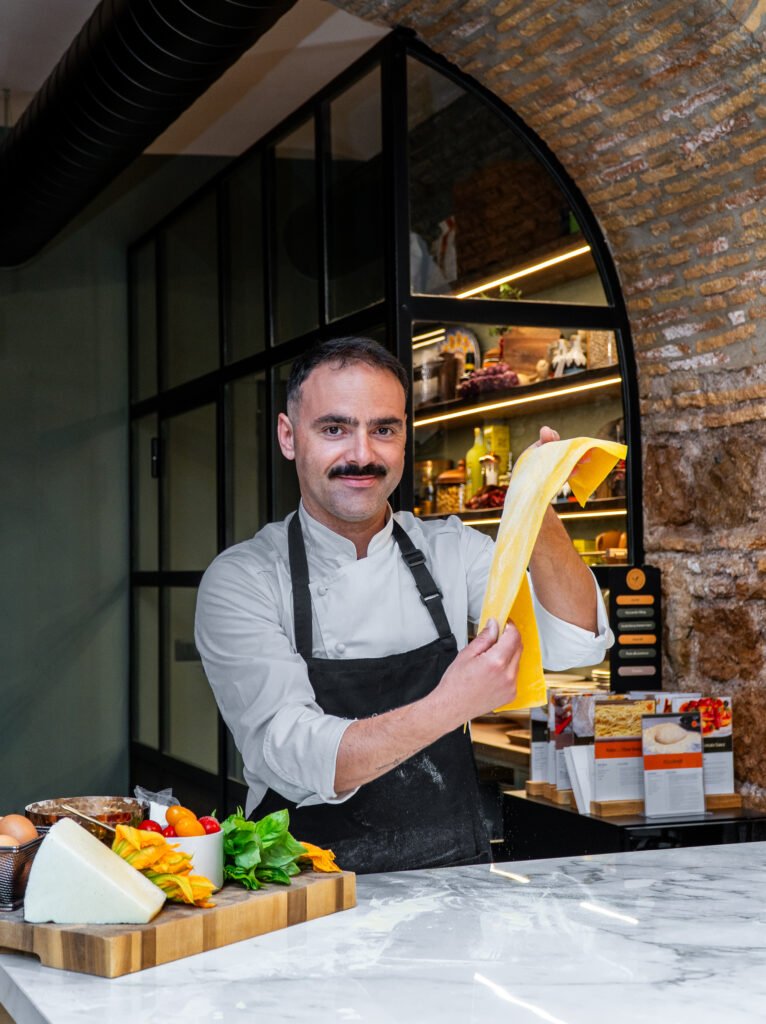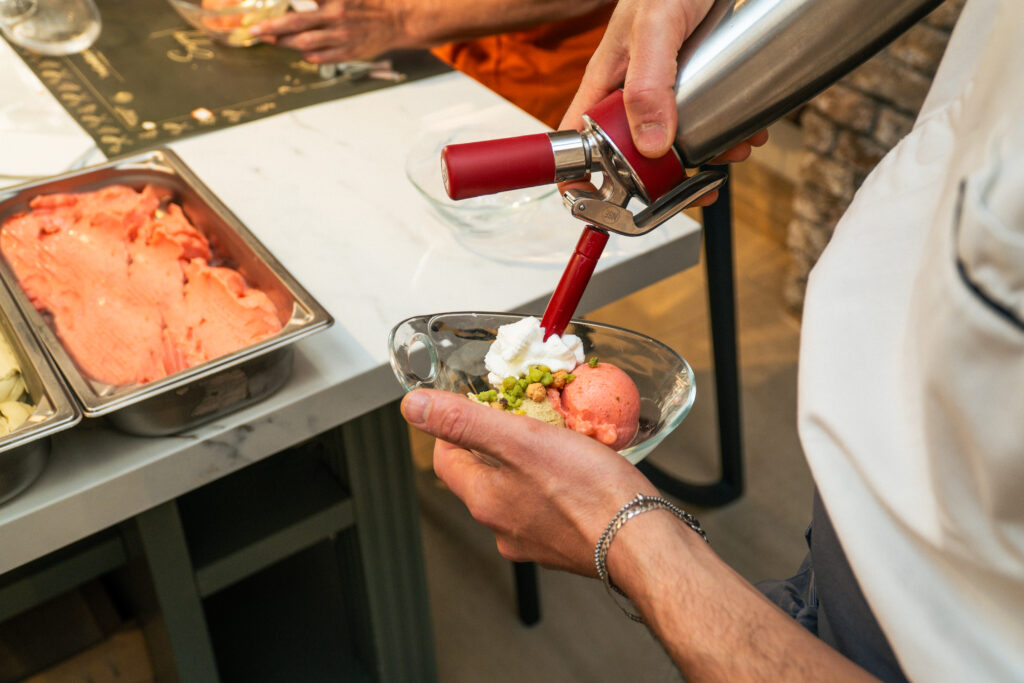Few things in life are better than enjoying a fresh fruity gelato in the warm Italian sun. Gelato, Italy’s answer to ice cream, delights every foodie who visits this country, nurturing their sweet tooth with an authentic taste of La Dolce Vita. Everyone agrees that gelato tastes delicious, but few people know what gelato actually is.
Sure, gelato and ice cream are superficially similar. But scoop a little deeper and you’ll find that it’s more than the name that separates them. So what is the main difference between gelato and ice cream? We asked EnjoyCooking’s own Chef Max, who provided some interesting insights.
🍦 Learn to make creamy, dreamy gelato through our Pizza & Gelato Cooking Class
The Ingredients
“The first thing to know about gelato,” Max begins, “is that it refers to fruity sorbets as well as more traditional ice cream flavours, like vanilla, chocolate, and coffee.”


‘Creamy’ gelato flavours go easy on the fat. Real Italian gelato never contains more than 8%. Ice cream on the other hand is loaded with the stuff (the clue is in the name ice cream). In fact, you may be surprised to learn that American ice cream cannot contain less than 10% milkfat.
“Fruit sorbets use natural fats from dried fruits or other vegetables. So a mango gelato – one of my favourites, and a great vanilla pairing – wouldn’t contain any milk or cream but just the naturally derived fat from the fruit itself.”
“But the biggest difference between gelato and ice cream”, Max tells us, “is the quality of the ingredients.” This is typical for most Italian cuisine, which prides itself on using few but quality ingredients. But visit any good gelateria (gelato parlour) in Italy and you can guarantee that your gelato will be made from fresh produce: strawberries fresh from the field; chocolate from Ecuadorian cacao beans; lemons picked from the Amalfi Coast.
The Production Method
Ice cream is generally mass-produced, and suffers the usual drawbacks of industrial production. Long-life milk powder is more cost-effective than organic, local produce, and spoonfuls of sugar can add superficial flavour to something lacking in taste.
We also tend to export ice cream far and wide (think Ben & Jerry’s, Magnum etc.) and to make sure it doesn’t defrost too quickly, producers pump it full of air – up to 100% of the ice cream’s weight! All this extra air adds to the ice cream’s volume, but it doesn’t add to the flavour.
Gelato, by contrast, is usually produced onsite in Italian gelaterie (gelato parlours) and in small batches. Italians don’t generally produce gelato for exportation – the idea is to serve the whole supply within a window of a few days (something you cannot imagine they struggle with given how much the Italians love the stuff). Gelato, therefore, contains far less air than ice cream, making it harder, thicker, and far more flavoursome.
Storing Gelato vs Ice Cream
You know how when you put that first spoonful of frozen ice cream in your mouth you can’t taste it until it starts melting on your tongue? That’s because the signals our taste buds send to the brain are (quite literally) numbed at lower temperatures, and it’s only when food heats up that our senses become more heightened.
We generally serve ice cream at -20°C (4°F), meaning it takes a few seconds to warm the taste buds on our tongue. Ice cream producers make up for this by adding plenty of sugar. But what you gain in sweetness you sacrifice in health.
The Italians serve their gelato warmer, at -13°C (8.6°F). That doesn’t only mean you avoid brain freeze (yay), but it means you get that sweet flavourful hit straight away. That, and you can taste the fruit or flavour from which the gelato is made instead of a trace of the original flavour and a tonne of sugar.
So Which Is Better: Gelato or Ice Cream?
“For me, it’s a no-brainer,” grins Max. “I lived in the States for years, and gelato was one of the things I missed most. The fresh ingredients, small-scale production methods, and special flavours (you’ll never find basil-flavoured ice cream but it makes a mean gelato) gives all new meaning to the phrase “Italians do it better.”
Then again, gelato is produced in smaller portions and its production is more localised. Ice cream is generally bulkier, and if it’s the cream you dream of, it wins hands down. But compared to gelato, it looks much cheaper, as it has been pumped full of air to keep it fresh. And because ice cream is served so cold, the only way to compensate for the taste is to add plenty of sugar.
➡️ Join a hands-on Pizza & Gelato Cooking Class near Rome’s Jewish Ghetto
➡️ Learn to make Pizza, Supplì and Gelato near the Colosseum➡️










 Back
Back


